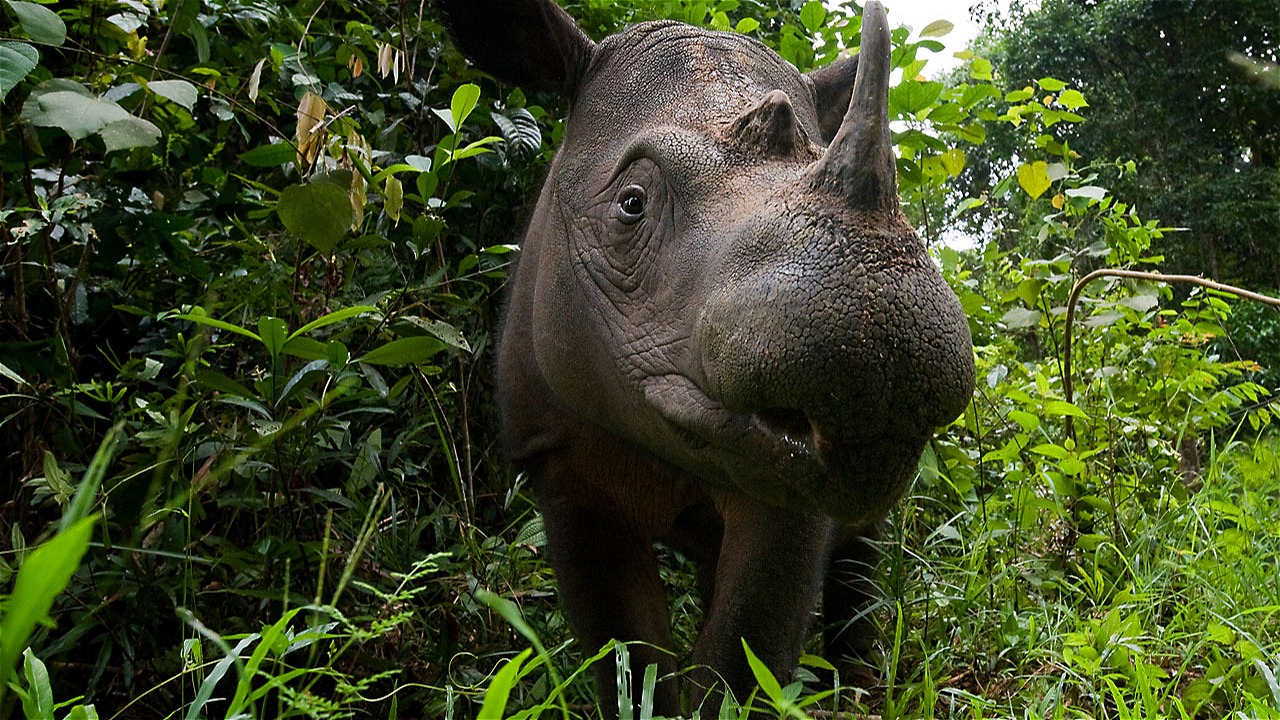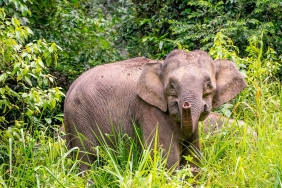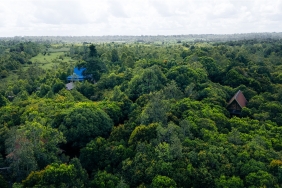INTERNATIONAL ALLIANCE TO SAVE THE SUMATRAN RHINO
Global Wildlife Conservation, International Rhino Foundation, International Union for Conservation of Nature, National Geographic Society, and WWF form a joint alliance to save the Sumatran Rhino: a long-term effort to support the Government of Indonesia's program to save the Sumatran Rhino.
Washington, D.C. (September 20, 2018) -In light of World Rhino Day on September 22, five international conservation organizations are forming an alliance to find innovative ways to save the Sumatran Rhino from extinction. This effort is in support of the Government of Indonesia's program led by the International Union for Conservation of Nature Species Survival Commission (IUCN-SSC), in collaboration with Global Wildlife Conservation (GWC), International Rhino Foundation (IRF), National Geographic Society (NGS), and WWF.
With fewer than 80 Sumatran rhinos left in the world, the species is said to be facing extinction, barring human intervention to save it. After decades of poaching and forest destruction, the biggest threat facing the species today is the distance separating the dwindling population. Rhinos face the risk of infertility if they cannot find a mate to reproduce, and eventually die out due to prolonged isolation. With the population fragmented and scattered in small pockets on Indonesia's two largest islands, their survival depends on the ability of conservationists to locate and safely relocate them to specially designed facilities.
"This huge challenge cannot be undertaken by one organization alone. We, IUCN-SSC, are proud to be in this powerful and extraordinary alliance, and we are confident that we will see Sumatran Rhinos breed once again," said Jon Paul Rodríguez, chair of IUCN-SSC.
"Saving the Sumatran Rhino from extinction is a top priority for the Indonesian government," said Wiratno, Director General of Natural Resources and Ecosystem Conservation, Ministry of Environment and Forestry of the Republic of Indonesia. "With the presence of species conservation experts, and with government support and local community awareness, we have prepared an Emergency Action Plan for rhinos that calls for the establishment of a national conservation breeding program. The Sumatran Rhino Survival Project will be pivotal in this effort and we welcome and support this coalition."
Since the beginning of the conservation movement, organizations and individual researchers have worked to save and protect species around the world. However, sometimes competing with each other for funding, resources, expertise and access. The Sumatran Rhino Rescue Alliance will bring international and Indonesian organizations together to create and implement a collaborative plan to save the species, and work in tandem with implementing partners on the ground and in close coordination with government leaders to achieve success.
"Our shared goal of establishing a rhino breeding program by bringing together rhinos that cannot breed in the wild will help us achieve our dream of seeing the next generation of Sumatran rhinos." Said Barney Long, senior director of species conservation at Global Wildlife Conservation.
Sumatran Rhino Rescue will facilitate activities in three key areas of species conservation:
Capacity Building: Establish two new Sumatran Rhino sanctuaries in Indonesia, one in Borneo and the other in northern Sumatra, and expand the existing facility at Way Kambas National Park;
Capture and Rescue: Conduct capture and rescue operations to relocate isolated Sumatran rhinos to managed conservation breeding facilities; and
Care and Protection: Incorporating rhinos into breeding programs using advanced technologies designed to maximize population growth.
"Decades of experience researching, training, and scientifically assessing, make this alliance not only the best opportunity for the survival of the Sumatran Rhino, but the only opportunity available," said Rizal Malik, CEO of WWF-Indonesia.
"We are drawing on our more than 22 years of experience raising and breeding Sumatran Rhinos and using the latest techniques at Cincinnati Zoo and at the Sumatran Rhino Sanctuary (SRS) in Way Kambas National Park," said Susie Ellis, Executive Director of the International Rhino Foundation. "IRF is confident that this alliance can help turn around the facts facing Sumatran rhinos."
This ambitious endeavor will require significant investment. To kick off the three-year fundraising effort, each partner organization has committed $1 million to support an emergency action fund that requires $30 million.
""This is our last chance to raise the profile of this little-known rhino species and preserve more than 20 million years of evolutionary history,"" said Jonathan Baillie, executive vice president and chief scientist at the National Geographic Society. ""Now is the time to get our act together.""
For more information and to learn how to contribute, visit www.sumatranrhinorescue.org





